cosmicinsightz
a collection of all cosmic ephemeralities and phenomenons. a blog dedicated to exploring the vastness of the universe
66 posts
Latest Posts by cosmicinsightz





White Dwarfs and Neutron Stars
What happens to a star after it dies depends entirely on the mass it contains. If the star has a low to medium mass (anything less than 8 solar masses) then at the end of its life it will transform into a white dwarf. If a star is massive (8-20 solar masses) then it will turn into a neutron star.
When a red giant starts to fuse helium to carbon and oxygen but lacks the mass to generate the core temperatures required to fuse carbon, an inert mass of carbon and oxygen will build up at the core. Towards the end of the stars nuclear fusion stage, it will shed its outer layers in the form of ionized gas forming a planetary nebula. The core that is left behind is the white dwarf typically about the size of earth. This is made up of electron degenerate matter which forms because the white dwarf lacks its previous ability to create an internal pressure meaning gravity squashes the mass much closer together. The reason this is happens is because under normal circumstances electrons with the same spin can’t occupy the same energy level, and there’s only two ways an electron can spin (this is known as the Pauli Exclusion Principle). In a normal gas this isn’t a problem because there aren’t enough electrons to fill the energy levels. In a “degenerate” gas however, all its energy levels filled. For a white dwarf to be forced smaller by gravity, it would have to make electrons go where they couldn’t go thus white dwarfs survive through quantum mechanical principles that prevent their collapse further. There are other unusual properties as well, white dwarfs with greater masses are actually smaller because gravity has to force the electrons closer together to maintain the outward pressure. However the limit to how much mass they can have is about 1.4 solar masses.
Neutron stars are incredibly dense (and one of my favourite things ever) with a typical one being about 20km and containing 1.4 solar masses. A teaspoon would weigh about a billion tonnes on a neutron star, that’s how dense they are. They are also composed entirely of neutrons as the force of gravity is so great that it has caused the electrons and protons to fuse into neutrons. The power from the resulting supernova that created the star causes it to spin up to 43,000 times a minute, gradually slowing over time. The neutron stars which are still spinning emit electromagnetic radiation that we can detect when it’s pointing towards earth (much like a lighthouse). These are known as pulsars. The magnetic axis of a pulsar is what determines the direction the beam will fire off in. However this is not necessarily the same as the rotational axis and this misalignment is what causes some to appear to pulse. There are currently three different types of pulsars that astronomers are aware of. The first is rotation powered pulsars which the radiation given off is caused by a slowing down of the rotation of the star. Accretion powered pulsars occur when the gravitational potential energy that falls onto the neutron star causes X-Ray’s that can be received from Earth. Finally there is magnetars where the radiation is caused by an extremely strong magnetic field losing energy.

The wings of the Twin Jet Nebula are the remnants of a dying star at the nebula’s centre, flung off by jets of gas. The nebula is 2,100 light-years from Earth, and a white dwarf star orbits the dying star.

Abell 39 is a planetary nebula formed by the ejected outer layers of a sun-like star collapsing into a white dwarf. It sits 7000 light years distant in the constellation of Hercules.

Large Magellanic Cloud & Comet 252P/Linear




CHANDRA REVEALS THE ELEMENTARY NATURE OF CASSIOPEIA A
Where do most of the elements essential for life on Earth come from? The answer: inside the furnaces of stars and the explosions that mark the end of some stars’ lives.
Astronomers have long studied exploded stars and their remains – known as “supernova remnants” – to better understand exactly how stars produce and then disseminate many of the elements observed on Earth, and in the cosmos at large.
Due to its unique evolutionary status, Cassiopeia A (Cas A) is one of the most intensely studied of these supernova remnants. A new image from NASA’s Chandra X-ray Observatory shows the location of different elements in the remains of the explosion: silicon (red), sulfur (yellow), calcium (green) and iron (purple). Each of these elements produces X-rays within narrow energy ranges, allowing maps of their location to be created. The blast wave from the explosion is seen as the blue outer ring.
X-ray telescopes such as Chandra are important to study supernova remnants and the elements they produce because these events generate extremely high temperatures – millions of degrees – even thousands of years after the explosion. This means that many supernova remnants, including Cas A, glow most strongly at X-ray wavelengths that are undetectable with other types of telescopes.
Chandra’s sharp X-ray vision allows astronomers to gather detailed information about the elements that objects like Cas A produce. For example, they are not only able to identify many of the elements that are present, but how much of each are being expelled into interstellar space.
The Chandra data indicate that the supernova that produced Cas A has churned out prodigious amounts of key cosmic ingredients. Cas A has dispersed about 10,000 Earth masses worth of sulfur alone, and about 20,000 Earth masses of silicon. The iron in Cas A has the mass of about 70,000 times that of the Earth, and astronomers detect a whopping one million Earth masses worth of oxygen being ejected into space from Cas A, equivalent to about three times the mass of the Sun. (Even though oxygen is the most abundant element in Cas A, its X-ray emission is spread across a wide range of energies and cannot be isolated in this image, unlike with the other elements that are shown.)
Astronomers have found other elements in Cas A in addition to the ones shown in this new Chandra image. Carbon, nitrogen, phosphorus and hydrogen have also been detected using various telescopes that observe different parts of the electromagnetic spectrum. Combined with the detection of oxygen, this means all of the elements needed to make DNA, the molecule that carries genetic information, are found in Cas A.
Oxygen is the most abundant element in the human body (about 65% by mass), calcium helps form and maintain healthy bones and teeth, and iron is a vital part of red blood cells that carry oxygen through the body. All of the oxygen in the solar system comes from exploding massive stars. About half of the calcium and about 40% of the iron also come from these explosions, with the balance of these elements being supplied by explosions of smaller mass, white dwarf stars.
While the exact date is not confirmed, many experts think that the stellar explosion that created Cas A occurred around the year 1680 in Earth’s timeframe. Astronomers estimate that the doomed star was about five times the mass of the Sun just before it exploded. The star is estimated to have started its life with a mass about 16 times that of the Sun, and lost roughly two-thirds of this mass in a vigorous wind blowing off the star several hundred thousand years before the explosion.
Earlier in its lifetime, the star began fusing hydrogen and helium in its core into heavier elements through the process known as “nucleosynthesis.” The energy made by the fusion of heavier and heavier elements balanced the star against the force of gravity. These reactions continued until they formed iron in the core of the star. At this point, further nucleosynthesis would consume rather than produce energy, so gravity then caused the star to implode and form a dense stellar core known as a neutron star.
The exact means by which a massive explosion is produced after the implosion is complicated, and a subject of intense study, but eventually the infalling material outside the neutron star was transformed by further nuclear reactions as it was expelled outward by the supernova explosion.
Chandra has repeatedly observed Cas A since the telescope was launched into space in 1999. The different datasets have revealed new information about the neutron star in Cas A, the details of the explosion, and specifics of how the debris is ejected into space.
TOP IMAGE….Chandra Reveals the Elementary Nature of Cassiopeia A CENTRE IMAGE….Location of elements in Cassiopeia A. Credit: NASA/CXC/SAO LOWER IMAGE….Periodic Table of Elements. Credit: NASA/CXC/K. Divona BOTTOM IMAGE….Pre-Supernova Star: As it nears the end of its evolution, heavy elements produced by nuclear fusion inside the star are

The Red Spider Planetary Nebula : Oh what a tangled web a planetary nebula can weave. The Red Spider Planetary Nebula shows the complex structure that can result when a normal star ejects its outer gases and becomes a white dwarf star. Officially tagged NGC 6537, this two-lobed symmetric planetary nebula houses one of the hottest white dwarfs ever observed, probably as part of a binary star system. Internal winds emanating from the central stars, visible in the center, have been measured in excess of 1000 kilometers per second. These winds expand the nebula, flow along the nebulas walls, and cause waves of hot gas and dust to collide. Atoms caught in these colliding shocks radiate light shown in the above representative-color picture by the Hubble Space Telescope. The Red Spider Nebula lies toward the constellation of the Archer . Its distance is not well known but has been estimated by some to be about 4,000 light-years. via NASA
js

Planetary Nebula M2-9 // Butterfly Nebula





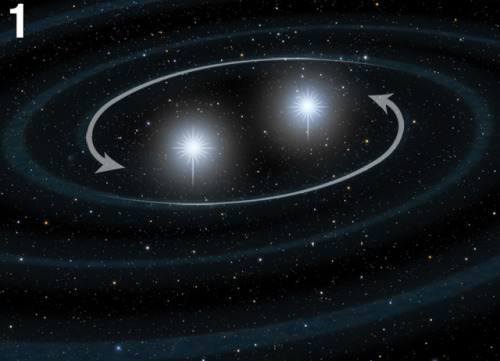




What Happens When Planets, Stars, And Black Holes Collide?
“Brown dwarf collisions. Want to make a star, but you didn’t accumulate enough mass to get there when the gas cloud that created you first collapsed? There’s a second chance available to you! Brown dwarfs are like very massive gas giants, more than a dozen times as massive as Jupiter, that experience strong enough temperatures (about 1,000,000 K) and pressures at their centers to ignite deuterium fusion, but not hydrogen fusion. They produce their own light, they remain relatively cool, and they aren’t quite true stars. Ranging in mass from about 1% to 7.5% of the Sun’s mass, they are the failed stars of the Universe.
But if you have two in a binary system, or two in disparate systems that collide by chance, all of that can change in a flash.”
Nothing in the Universe exists in total isolation. Planets and stars all have a common origin inside of star clusters; galaxies clump and cluster together and are the homes for the smaller masses in the Universe. In an environment such as this, collisions between objects are all but inevitable. We think of space as being extremely sparse, but gravity is always attractive and the Universe sticks around for a long time. Eventually, collisions will occur between planets, stars, stellar remnants, and black holes.
What happens when they run into one another? Unbelievably, we not only know, we have the evidence to back it up!

Seven Worlds for TRAPPIST 1 : Seven worlds orbit the ultracool dwarf star TRAPPIST-1, a mere 40 light-years away. In May 2016 astronomers using the Transiting Planets and Planetesimals Small Telescope announced the discovery of three planets in the TRAPPIST-1 system. Just announced, additional confirmations and discoveries by the Spitzer Space Telescope and supporting ESO ground-based telescopes have increased the number of known planets to seven. The TRAPPIST-1 planets are likely all rocky and similar in size to Earth, the largest treasure trove of terrestrial planets ever detected around a single star. Because they orbit very close to their faint, tiny star they could also have regions where surface temperatures allow for the presence of liquid water, a key ingredient for life. Their tantalizing proximity to Earth makes them prime candidates for future telescopic explorations of the atmospheres of potentially habitable planets. All seven worlds appear in this artists illustration, an imagined view from a fictionally powerful telescope near planet Earth. Planet sizes and relative positions are drawn to scale for the Spitzer observations. The systems inner planets are transiting their dim, red, nearly Jupiter-sized parent star. via NASA
js
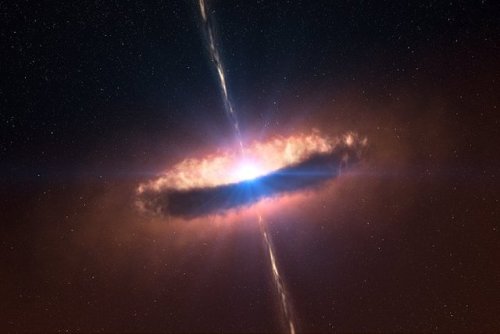



What is a protostar?
The formation of stars begins with the collapse and fragmentation of molecular clouds into very dense clumps. These clumps initially contain ~0.01 solar masses of material, but increase in mass as surrounding material is accumulated through accretion. The temperature of the material also increases while the area over which it is spread decreases as gravitational contraction continues, forming a more stellar-like object in the process. During this time, and up until hydrogen burning begins and it joins the main sequence, the object is known as a protostar.
This stage of stellar evolution may last for between 100,000 and 10 million years depending on the size of the star being formed. If the final result is a protostar with more than 0.08 solar masses, it will go on to begin hydrogen burning and will join the main sequence as a normal star. For protostars with masses less than this, temperatures are not sufficient for hydrogen burning to begin and they become brown dwarf stars.
Protostars are enshrouded in gas and dust and are not detectable at visible wavelengths. To study this very early stage of stellar evolution, astronomers must use infrared or microwave wavelengths.
Protostars are also known as Young Stellar Objects (YSOs).
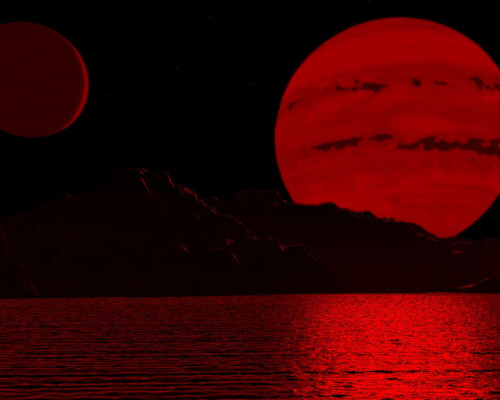
This image shows what it might look like standing on the surface of a planet orbiting a brown dwarf star. An alien moon can also be seen in the sky. The brown dwarf gives off such feeble visible light it is difficult to see any of the landscape except for the reflection in the water.
credit: Jeff Bryant
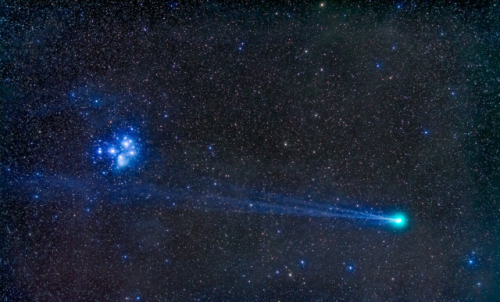
Comet Lovejoy and The Pleiades


Photo by James Graham












I couldn’t help myself on such a clear night. I revisited the Lagoon Nebula, Trifid Nebula, and M22 cluster, but I checked out the Saturn Nebula, which is smaller than I expected.




Messier 78 Reflecting Orion

NGC 1097, Galaxy Foraged in the Furnace
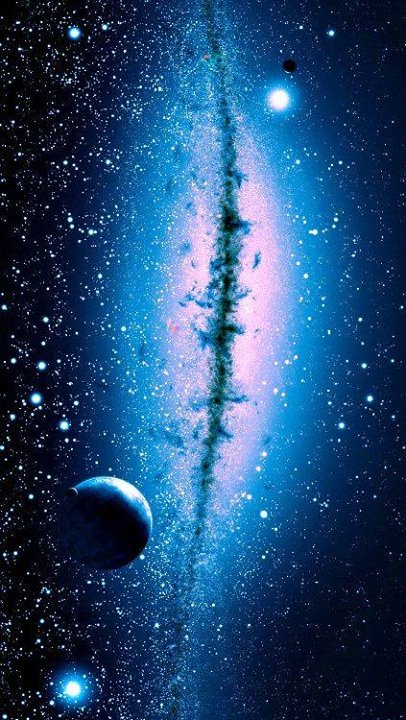

Arp 240, Galaxy Bridge